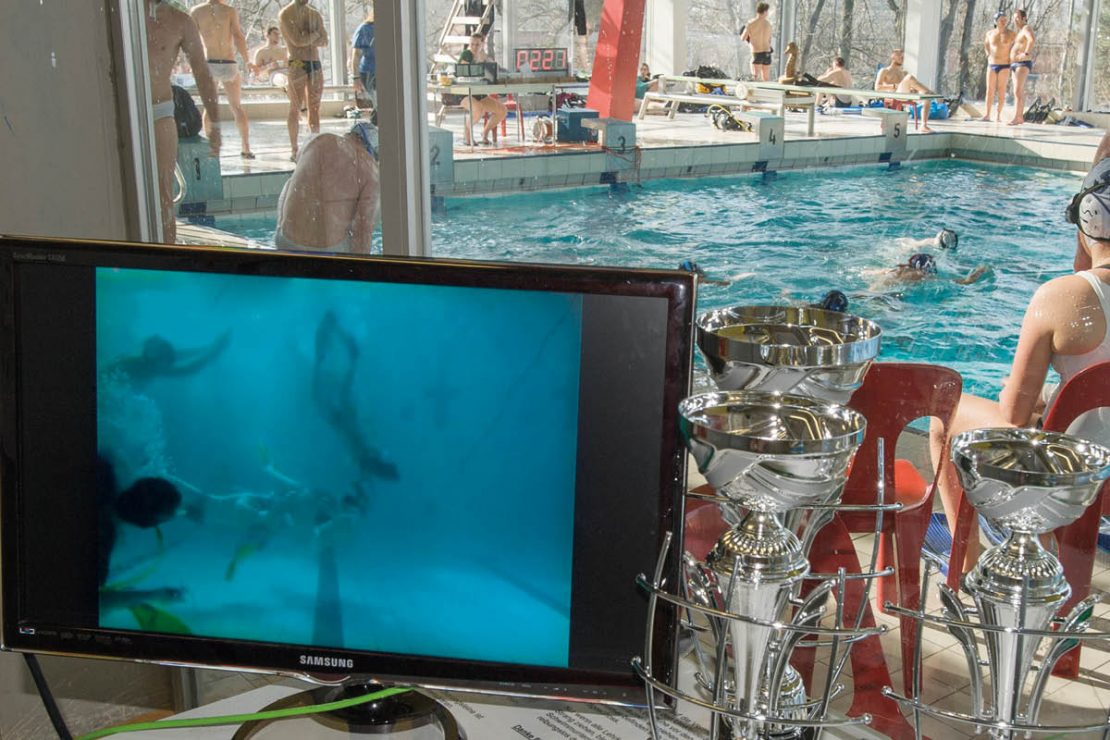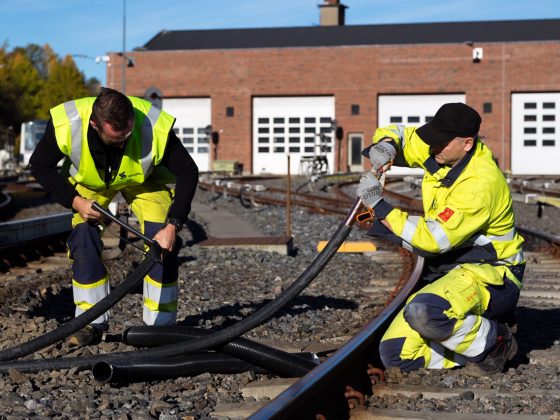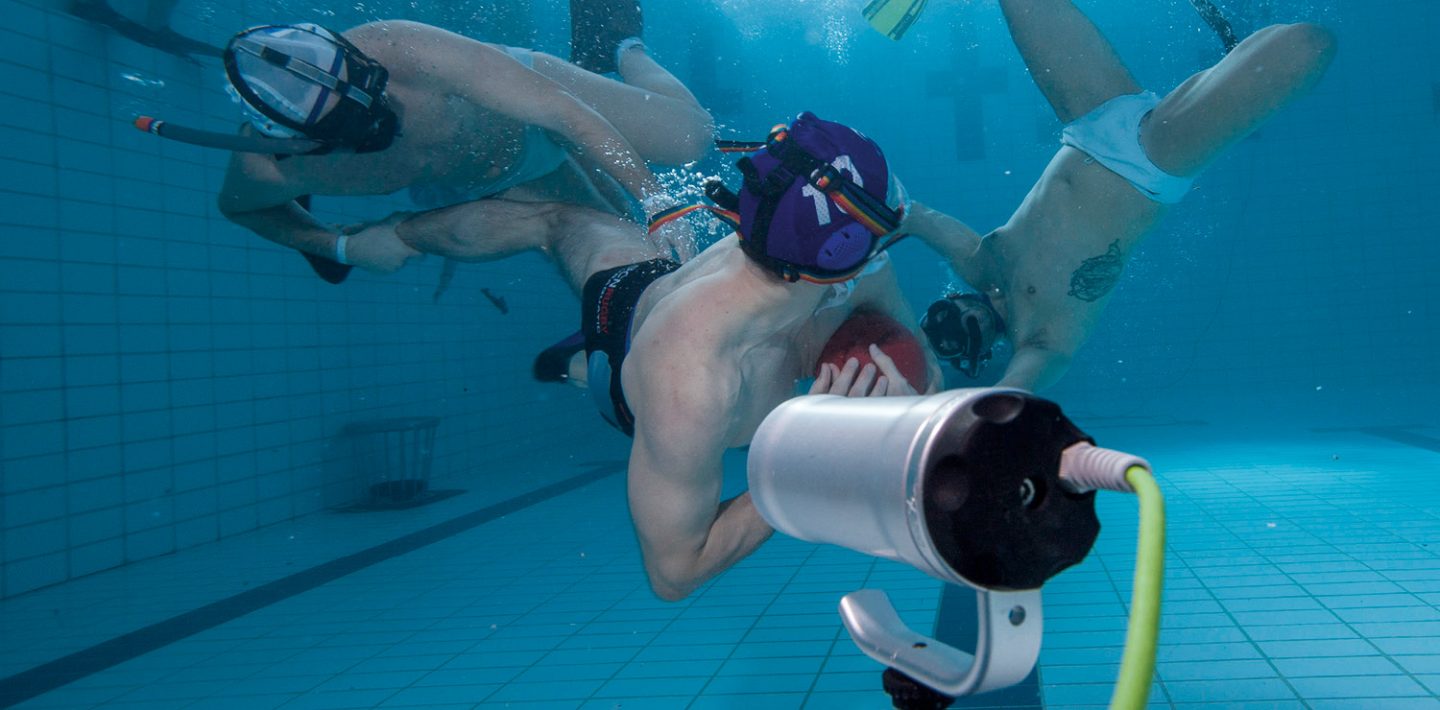
Underwater rugby is a tough, demanding sport. It is played in a maximum 12 by 20 metre pool. At a depth of 3.5 to 5 metres, two heavy metal baskets are set up on the bottom of the pool as goals. The teams have to try to get the ball into them. The ball is similar to a handball but is filled with salt water so that it sinks. A game is made up of two 15 minute halves. Each team consists of six players and six replacements, along with 3 substitutes, and they change on the fly. In a tangle of arms and legs, six players per team attempt to sink the ball into the opponent’s basket. Lots of things are allowed, such as placing a player on your own basket to try to stop the opponents from scoring, but not “biting, scratching, hitting, choking, kicking, excessive twisting of limbs and deliberate ducking” according to the official rules.
Only 3D team sport
The players do not wear compressed air bottles, so they have to repeatedly come up to the surface of the pool, which can be up to five metres deep, to breathe. Flippers are the only equipment allowed. That’s what makes the sport so exciting. The constant surfacing and diving, attack and defence results in new game situations almost every second. And team-mates and opponents are not only in front of you, behind you and to your right and left but also above and below you. “Underwater rugby is the only truly three-dimensional team sport,” explains Kathrin Fuchs, Kathrin Fuchs, who has been playing in the women’s national league for years.
But as exciting as the game may be, fans around the pool cannot follow much of the underwater battle. That means underwater rugby is not exactly a magnet for spectators. So the clubs have reacted. Some use an underwater camera, either fixed or operated by a scuba diver, to transmit the game on a screen in the hall. This is a major technological challenge. At a depth of five metres, there is a noticeable water pressure on the equipment, which also has to be able to withstand chlorinated water.
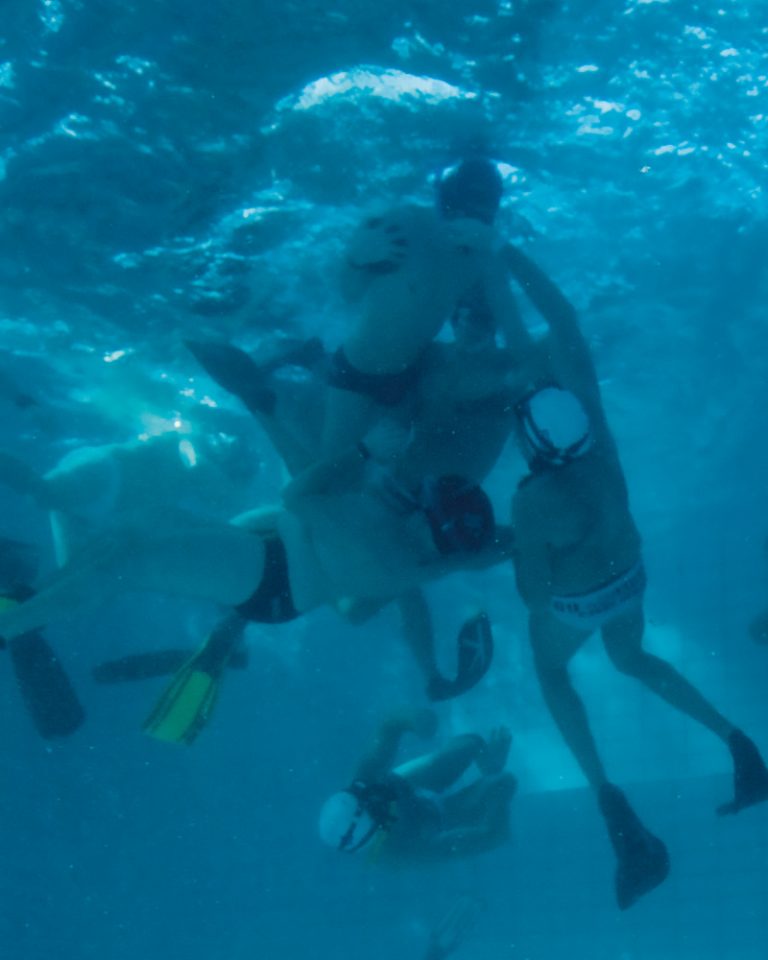
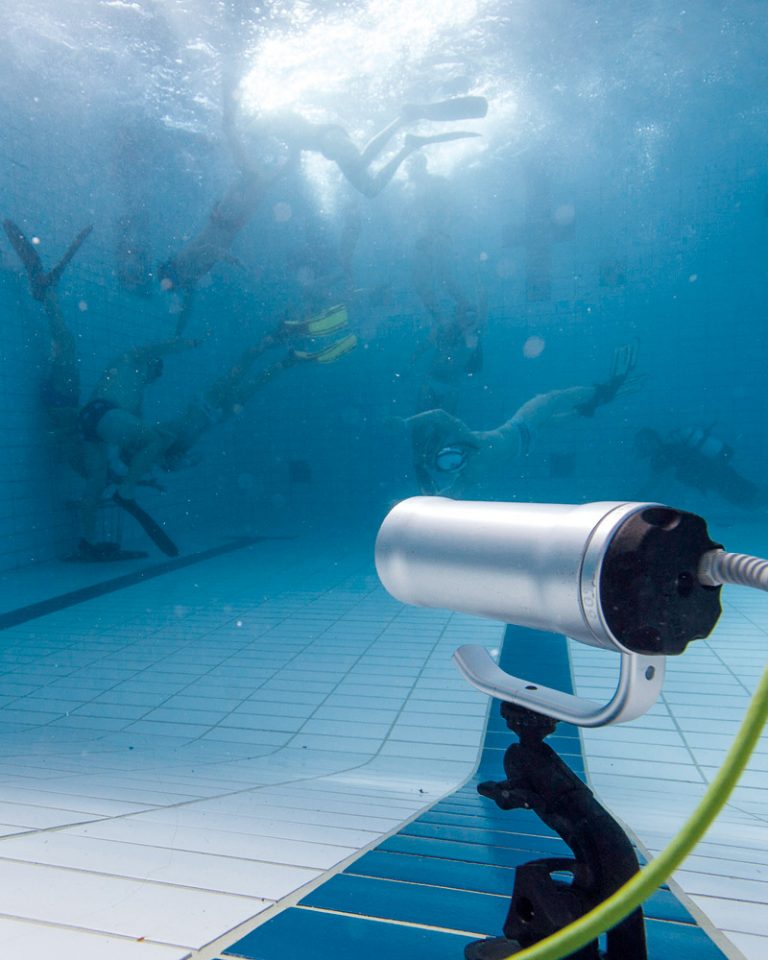
LAPP sponsors cables for live transmission
Kathrin Fuchs wanted to be on the safe side and asked LAPP whether the Stuttgart-based company could provide suitable cables. Gottfried Marquardt, South West Sales Manager at LAPP, was really keen and responded immediately: “Of course, we can do that. It matches our philosophy perfectly.”
For the demanding underwater application, LAPP provided the Stuttgart diving club with a hundred metres of ETHERLINE® Y FLEX. This is a flexible, industry-strength category 5e high-speed data cable with double screening to guarantee reliable transmission in electromagnetically charged areas. Its PUR sheath makes it oil-resistant for industrial usage, but can also withstand chemicals such as the chlorine added to the pool to disinfect the water. The cable was used for the first time at the Stuttgart Seepferdchen, an international underwater rugby tournament, which is held every February at the indoor pool in Stuttgart-Sonnenberg. The video transmission worked smoothly, taking spectators right to the heart of the action.
